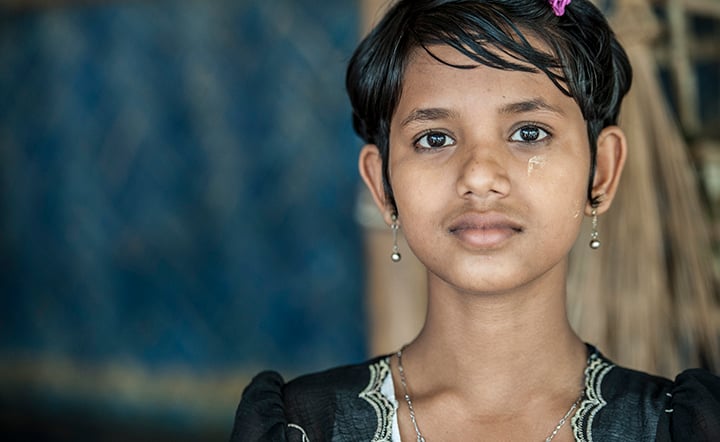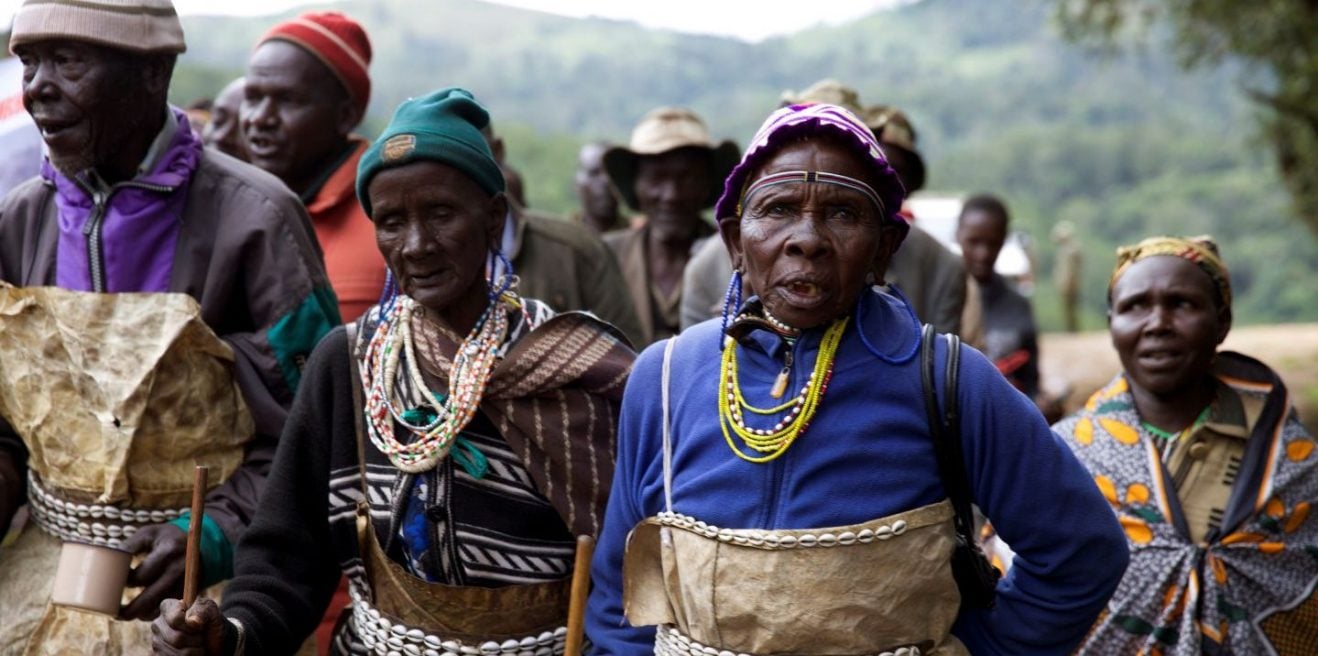Maasai in Tanzania
-
Though the exact number of Maasai in Tanzania is unknown, the population has been estimated at around 430,000. Located primarily in northern Tanzania, their pastoralist way of life has been threatened by the encroachment of their communal territory by the Tanzanian government and foreign corporations.
-
The Maasai are a pastoralist people, whose traditional territories stretch from the Rift Valley lakes of Kenya across the Serengeti plains into Tanzania. They comprise 14 tribal groups, including the Kisongo, Purko, Loita and Mataputo. In 1884-85, the European colonial powers gathered at the Berlin Conference to divide up Africa between them. Maasailand was split into two areas – one lying in British-controlled Kenya and the other in the German colony of Tanganyika. While originally the majority of Maasai lands were on the Kenyan side, displacement in the early 20th century to make way for white settlers in Kenya means that today the greater part of Maasai territory lies in Tanzania. Restrictions on Maasai movement continued to increase throughout the century, as national parks and game reserves were created on both sides of the border.
-
Maasai have had several ongoing disputes involving large areas of their customary lands with the Tanzanian government for over 30 years. In the 1980s, 10,000 acres of Maasai pastoral land in Loliondo district was sold to Tanzania Breweries Limited (TBL) to cultivate wheat and barley. Although the Maasai villages were offered no compensation and were not consulted regarding the land transfer, they were not prohibited from accessing most of the land to graze and water their livestock as TBL only used around 700 acres for cultivation. For 19 years the arrangement continued, and the Maasai community retained its customary ownership of the land. This situation ended in 2006, when TBL sold the entire acreage plus an additional 2,617 acres to Tanzania Conservation Limited (TCL), the Tanzanian subsidiary of US-based tourism company Thomson Safaris. Since that time, the community has been denied access to over 12,000 acres of land on which they have historically grazed their cattle and sustained their traditional livelihood.
With international support, the Maasai villages initiated legal proceedings in 2010 based on an adverse possession land claim in domestic courts against TBL and TCL. Not only did they seek to reclaim the land they once held, they also sought an injunction against land development for tourism pending the court’s decision on the merits. Unfortunately, the Maasai’s application was dismissed on procedural grounds in 2013, but the community re-lodged their case the same year, requesting the court to revoke the tourism company’s illegally granted land title and award damages for the suffering endured as a result of their land exclusion. The case was pending until October 2015 when the Maasai community suffered a disappointing loss. Although the Arusha High Court acknowledged that 2,617 acres of the disputed land were indeed unlawfully acquired – it being added on to the 10,000 acres in the most recent land transaction without consent – the majority of the decision favoured the defendants. No actual damages were awarded to the Maasai, who remain prohibited from entering the land to use its resources.
The villagers are appealing the decision and hope to resolve this dispute in their favour. There continue to be reports of violence and intimidation against Maasai found grazing livestock on the land, as well as community leaders.
Meanwhile, Maasai in a neighbouring area, also in Loliondo district, have faced repeated violent evictions on account of a lease granted in 1992 by the Tanzanian government to the Ortello Business Corporation (OBC), which is owned by royals of the UAE. The lease granted hunting rights to 4,000 sq km land, which is home to over 60,000 Maasai. The area has repeatedly been the setting of forced evictions and violence. In 2009, for instance, 200 ‘bomas’ (enclosed compounds) were burned down, and many Maasai were beaten and detained in an effort to evict communities from the area. The UN Special Rapporteur on indigenous peoples, James Anaya, reported that at least one Maasai woman was raped repeatedly by police, and four pregnant women suffered miscarriages as a result of the assaults.
In 2013, the Tanzanian government announced that it would create a 1,500 sq km exclusive ‘wildlife corridor’ for OBC. The decision would have displaced over 30,000 Maasai and would have effectively reduced the community land by about 40 per cent.
The government backed down from its 2013 plan following considerable international pressure, including an Avaaz.org online petition that quickly gathered over two million signatures. In 2015, the authorities reneged on their promise, burning down bomas and forcibly evicting Maasai from the area. Community activists reported that 114 homes were burned down in the space of just a few days in February alone, leaving 2-3,000 Maasai without shelter.
A commission to find a solution to the land dispute presented its findings in spring 2017, but loca Maasai activists informed MRG during the autumn that an eviction process nevertheless had commenced. By autumn 2017 they were reporting that, so far, hundreds of bomas had been burned and thousands of people had been displaced. Young Maasai men had also been jailed, and cattle had been confiscated and sold.
Just months after these reports of renewed violence, the Tanzanian authorities made a surprise announcement in November 2017 that it was revoking OBC’s lease. The new Natural Resources Minister Hamis Kigwangalla had reported OBC’s executive director to the government’s anti-corruption bureau for trying to bribe him and colleagues. However, given the government’s record of going back on its promises to the Maasai of Loliondo, it remains to be seen whether OBC will actually leave. In December 2017, prime minister Kassim Majaliwa announced that a ‘special authority’ would be created for the Loliondo area.
The loss of traditional herding lands as well as recurring drought contribute to Maasai urbanization. In Tanzania’s capital Dar es Salaam alone, there are an estimated 5,000 Maasai youth attempting to make a livelihood in their new urban environment, according to Onesmo ole Ngurumwa of the Tanzania Human Rights Defenders Coalition, one group working to protect Maasai land rights. In 2016 another rights defender, Maasai leader Edward Loure, was awarded the Goldman Prize for his innovative approach to community land titling in resistance to safari and game park development. He succeeded in protecting over 200,000 acres of indigenous land and has continued his work, with the intention of reducing the threat of forced eviction and urbanization.
Alongside the loss of homes and livelihoods, the struggle to transmit the intangible aspects of cultural knowledge and sacred practices to younger generations remains a very real concern – not only in Loliondo, but right across Maasai territories in Kenya and Tanzania. And while the Maasai people’s identity is under increasing threat, companies have been profiting from Maasai imagery by associating their products with the indigenous community to promote sales. Over the last few years, Maasai activists have made efforts to form a general assembly of elders to represent them in formal negotiations with such companies in order to safeguard their culture through intellectual property protections – an important step in the community’s efforts to regain control of their lives.
Updated May 2018
Related content
Minority stories
-

15 September 2017
Denial and Denigration: How Racism Feeds Statelessness
Five organizations from Eastern Europe came together to address the growing concern of online discrimination and hate speech against Europe's biggest minority community, the Roma.
- South Asia
- Discrimination
- Minority stories
-

11 July 2016
State of the World’s Minorities and Indigenous Peoples 2016: Focus on culture and heritage
Five organisations from Eastern Europe came together to address the growing concern of online discrimination and hate speech against Europe's biggest minority community, the Roma.
- Central Asia
- Discrimination
- Minority stories
Programmes
-
Our strategy
We work with ethnic, religious and linguistic minorities, and indigenous peoples to secure their rights and promote understanding between communities.
-
-

